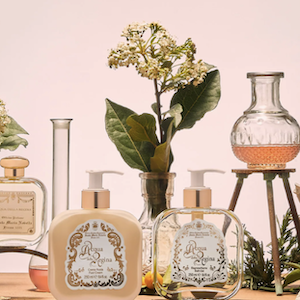INDUSTRIAL; Plastics: A Memoir
By Anoushka Pinto
Plastic is a marvellous invention and has become an indispensable part of our lives. It is ubiquitous i.e. it is everywhere and enmeshes itself in the items that we use on the go. Common items such as the toothbrush that you use to scrub your teeth clean, the wide-toothed comb that you use to detangle your hair and the aglet, the end of your shoelace, is produced from plastic.
 Halex combs, made by the British Xylonite Company, c1910-40. Courtesy: Vestry House. Photo: Rob Harris.
Halex combs, made by the British Xylonite Company, c1910-40. Courtesy: Vestry House. Photo: Rob Harris.
As a resource, plastic has played a crucial role in design for decades and the design community has honed the creative manipulation of this material. Its contribution in building and construction, architectural coatings, insulation devices and the automobile industry is palpable.
It was over three-hundred years ago that plastics were first used, albeit, in a more natural compound of plastic. It contained rubber latex from plants or shellac from lac beetle secretions, but were difficult and expensive to obtain. This encouraged scientists and chemists of the time to seek economical substitutes.
As history entails, London-based Victorian inventor Alexander Parkes created Parkesine, the earliest development in synthetic plastics, in 1865. It was a predecessor to celluloid and became an effective alternative for ivory and tortoiseshell that had previously been employed in making everyday objects. The discovery of Parkesine was a pivotal moment and it replaced ivory as a raw material.
 Parkesine snooker ball,1865. Courtesy: MoDiP (Museum of Design in Plastics), Plastics Historical Society.
Parkesine snooker ball,1865. Courtesy: MoDiP (Museum of Design in Plastics), Plastics Historical Society.
Then, in 1909, Belgian chemist Leo Baekland developed Bakelite, the first ever fully-synthetic plastic. It gained instant popularity because it was lightweight, durable, ductile and heat-resistant. It made a great insulator, favourable to the automobile and electric industries.
The dependence on plastics, however, has increased inexorably over the past few decades and the mass environmental annihilation it has caused in its wake is undeniable. It has turned into an epidemic – plastic, in all of its physical embodiments, now littering every surface of the earth and choking our life sources. This has called for urgent reinforcements and daily advancements are contributing laboriously towards finding alternatives to reduce the threat that it poses to society. Recycling has become the governing mantra in every household and community.
With a similar intention at heart, the Nunnery Gallery at Bow Arts has come forward with a stimulating, thought-provoking exhibition and an array of extensive events. It is dedicated to the century-old use of plastics in east London and delves into its invention, evolution and unknown industrial heritage.
 Parkesine toothbrush blanks, made by Alexander Parkes, c1866. Courtesy: Harry Mernick. Photo: Rob Harris.
Parkesine toothbrush blanks, made by Alexander Parkes, c1866. Courtesy: Harry Mernick. Photo: Rob Harris.
Each year, Nunnery Gallery, as a part of its ‘Raw Materials’ research project, organises an exhibition that runs across a materialistic theme. The first and second phases focussed on Wood (2017) and Textiles (2018), respectively. This year’s display is the third installation and centres on plastics. In addition, it will also host boat tours along the River Lea, workshops on recycling plastics and a symposium on the future of plastics.
We are acutely aware of the devastating effects that plastic pollution has on the environment. More and more people have become mindful of the environment they live in and want to try to contribute towards a plastic-free environment. If you are just as keen to jump on the band-wagon, here is a list of interesting eco-friendly and economical reusable plastic products that could point you in the right direction:
- Collapsible coffee cups: Collapsible coffee cups would be a perfect alternative to the single-use ones. They are also easy to discard. You can distort them within the lid when not in use.
- Compostable bin liners: Your trash doesn’t have to harm the environment. Biodegradable bin liners are non-toxic and easily decompose in the soil, unlike the plastic ones we use in our homes. You can increase the longevity of the bin-bag by not throwing in food wastes directly (which causes it to break-down faster).
- Rechargeable electric plasma lighter: Electronic arc lighters, also called ‘plasma lighters’ are a multi-purpose, long-lasting replacement for disposable plastic lighters. They spark a plasma arc rather than a flame and can be recharged via a USB in less than an hour! Each lighter can be used at least 300 times upon recharging.
- Bamboo toothbrush:Bamboo toothbrushes are a great substitute for the disposable plastic toothbrushes that you replace every three months. They are eco-friendly, effective and last just as long.
- Paper straws: Paper straws are the solution to the issue that is non-biodegradable plastic straws. They are long-lasting, ecological and are ideal to use in the fast food industry or even at parties.
‘Raw Materials: Plastics’ will be on display at Nunnery Gallery between Friday, May 17, 2019 and Sunday, August 25, 2019 from 10 a.m. to 5 p.m. A private viewing will be held on Thursday, May 16, 2019. More details about the exhibition and Nunnery Gallery can be found here.





